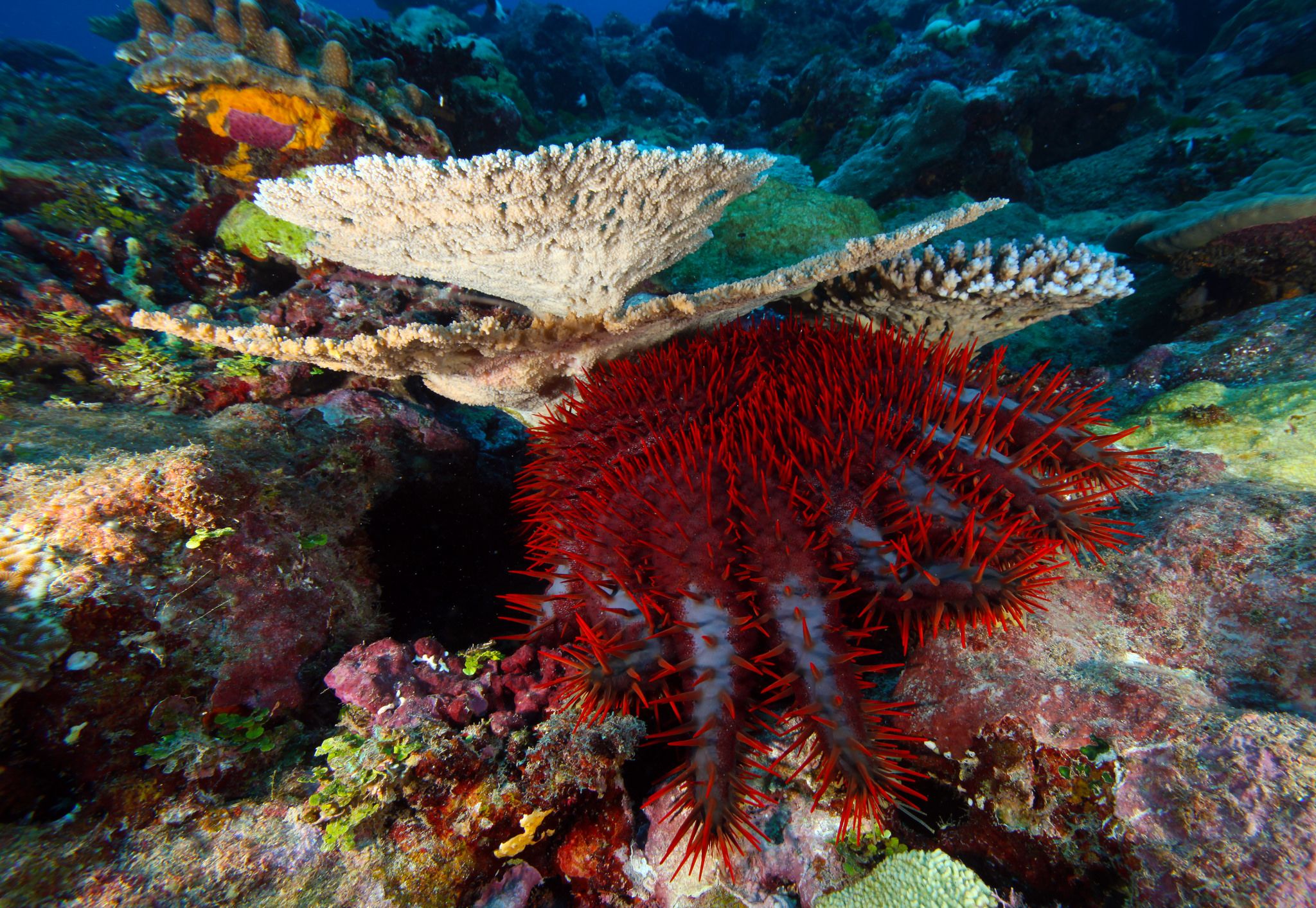
Giant, spiky starfish have been eating away at the Great Barrier Reef for decades. Along with climate change, pollution, development and a slew of other issues, these starfish are among the many serious threats facing the largest coral reef on Earth. The solution? Mass murder.
This week, a team of 25 volunteers has been hard at work hunting down the starfish and injecting each one with bile salts, which punch holes in cell walls. The approach kills the critters within a day.
The culprits, called crown-of-thorns starfish, first drew notice in the 1970s and have been a lingering problem at the reef ever since. "This starfish is not like a typical five-arm starfish," Mike Hall, who studies the crown-of-thorns at the Australian Institute of Marine Science, told Newsweek in September. They have more than a dozen arms and can be as large as a dinner plate. And they're always hungry.
The very specific diet of these starfish is problematic. "They only feed on coral flesh," Hall said, dissolving it with digestive juices and then sucking up the smoothie that results. Across the Great Barrier Reef, Australia has killed more than 600,000 of the starfish since 2012.
This month's execution expedition is not the first time divers have set out to eradicate infestations of crown-of-thorns starfish—the tactic has proven highly effective in carefully monitored tests. The main drawback to the approach (besides having to do it at all) is that it's not very efficient because each starfish has to be injected individually. "As you can imagine, that's slow and laborious and expensive," Hall said.
According to the Australian Broadcasting Corporation, the current effort, which targets a section called Swains Reef, is hoping to kill 1,000 starfish a day for nine days. That quantity, though, is subject to change depending on the number of starfish they find and the weather conditions during the expedition. High numbers of the voracious animals were first spotted in the area, which is in a southern and relatively isolated section of the Great Barrier Reef, in December.
Read more: Australia Wants to Breed Giant Snails to Save the Great Barrier Reef
Scientists aren't sure precisely why crown-of-thorns have flourished so enthusiastically. They suspect high nutrient levels in agricultural run-off likely contributes to the problem.
Conservationists are trying a host of approaches to preserve the reef from the barrage of threats it faces. Among the most extreme is an attempt to breed corals that are less prone to climate-induced bleaching or replacing dead corals with hand-planted babies.
But Hall said those measures won't be effective without better control of the starfish. "If nothing's done about the crown-of-thorns starfish, you're just producing food for the starfish."
Uncommon Knowledge
Newsweek is committed to challenging conventional wisdom and finding connections in the search for common ground.
Newsweek is committed to challenging conventional wisdom and finding connections in the search for common ground.
About the writer
Meghan Bartels is a science journalist based in New York City who covers the science happening on the surface of ... Read more
To read how Newsweek uses AI as a newsroom tool, Click here.








